Water Needs Curtail China’s Coal Gasification For Fuel, Yet Conversion To Chemicals Pushes Ahead
Though coal-to-liquids has been suspended due to water scarcity, the process uses 50 percent less water per unit of end product compared with coal-to-chemicals processes which have been given the go-ahead in hopes of slowing petroleum imports.
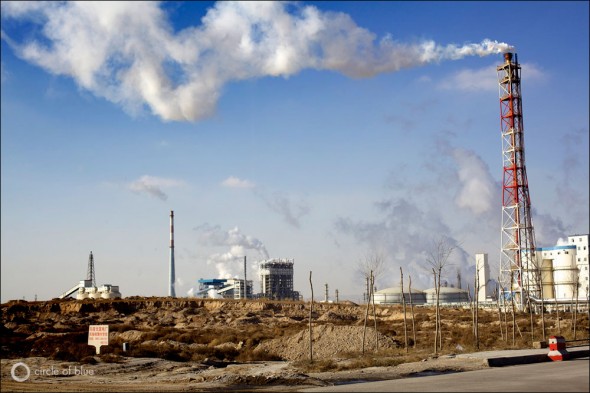
By Keith Schneider
Circle of Blue
ORDOS, China—All silvery pipes and steel pressure vessels, the Shenhua Group’s breakthrough new refinery, stretched across a kilometer of Inner Mongolia’s sand and scrub, has attracted global attention as a curious feat of technology and as an imposing challenge to China’s environment and modernization.
Developed, in part, with the help of researchers at West Virginia University and opened 29 months ago in the desert region east of this city of 1.5 million residents, the refinery annually converts 4.1 million metric tons of coal into 1.1 million metric tons (6.9 million barrels) of diesel fuel for China’s growing fleet of heavy vehicles. At roughly $US 50 a barrel to produce, the Shenhua refinery is making good money in the current $US 112-per-barrel global oil market.
When it was approved in 2003 by the National Development and Reform Commission (NDRC), China’s powerful economic oversight agency, the $US 4 billion refinery was seen as the vanguard of the world’s largest program for converting coal to new products such as chemicals, fertilizers, and fuel.
Shenhua’s engineers had cracked an old industrial code—managing to turn 100-year-old chemistry on its head—and produced what looked to be a big national payoff.
By pulverizing coal to dust, mixing it with water, and heating it to form a gas in state-of-the-art industrial plants, Shenhua and China’s other big, state-owned energy companies had the possibility to use the nation’s mammoth coal reserves to produce diesel fuel. That, in turn, could slow China’s expanding demand for petroleum, which last year reached 3.6 billion barrels—52 percent of it imported—nearly double the 2005 demand.
China’s central government energy and economic development agencies were so enthused they approved plans to build 22 more coal-to-liquid fuel plants, most of them to be constructed close to the largest reserves of coal in the country’s dry northern and western provinces.
Water Savings Code Not Cracked
But Shenhua’s engineers weren’t able to crack the other part of the code; the part that deals with water use.
It takes 10 to 12 cubic meters (2,641 to 3,170 gallons) of water to produce a metric ton (6.3 barrels) of fuel. Shenhua’s Ordos plant consumes 10 million cubic meters (2.64 billion gallons) of water annually in a dry region where competition is already fierce between agriculture, the coal sector, and northern China’s growing cities. Dedicating that much water to turn coal into diesel fuel made even the powerful economic development chiefs in Beijing nervous.
In September 2008, three months before the Shenhua plant opened, the NDRC announced it was suspending the coal-to-liquids construction program. Shenhua pressed ahead to operate its plant as planned.
Three other plants that were under construction were allowed to be completed, though they are all much smaller demonstration facilities that produce around 1 million barrels of fuel a year, said Qingyun Sun, associate director of the US-China Energy Center at West Virginia University
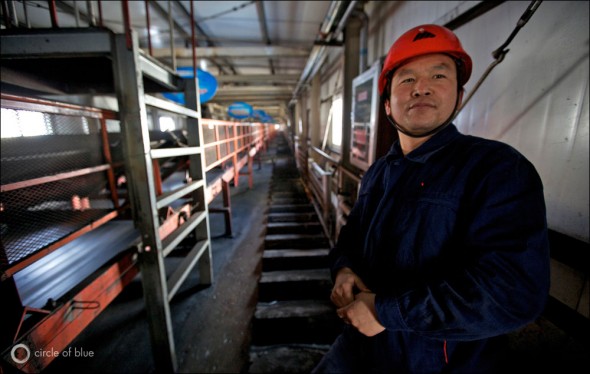
Xiangkun Ren—who led the Shenhua team that designed the Ordos plant and is probably the most accomplished chemical engineer in China—is matter of fact about the government’s change in direction.
In an interview with Circle of Blue on a chilly morning last December in Beijing, 885 kilometers (550 miles) east of Ordos, Xiangkun sips coffee and describes the essential resource conflict that overwhelmed the coal-to-liquids program.
“Water is a problem,” the 47-year-old engineer says, shrugging. “Water consumption is high. It’s difficult to put a new plant in that area. There will be no more plants until we understand more about water supply. If we build another one, we’ll have to think harder about where the water is located and how much we can use.”
As an example of China’s increasingly dire confrontation between rising energy demand, diminishing freshwater reserves, and the unceasing drive for swift economic growth, the story of Shenhua’s coal-to-liquids plant is hard to beat. In almost every way imaginable, the expectations that heralded the construction of the Shenhua plant—followed by the change in national direction that greeted its opening—describe the exceptionally risky path China is pursuing to diversify how it uses the nation’s huge coal reserves.
Coal: Not Just For Energy, Anymore
Every step of the process—coal mining, processing, shipping, combustion, and gasification— requires huge amounts of water and produces the world’s largest emissions of climate changing gases. Though China is pursuing aggressive programs to improve energy efficiency, undertaking experimental programs in carbon capture and storage, investing in water-sipping and pollution-free renewable energy development, and recycling and conserving water when possible, the nation’s coal production and consumption is soaring.
The result is that emissions of climate-changing pollution could double by the end of the decade, according to several studies by domestic and international science and environmental groups. And the national choke point caused by rising energy demand fueled by coal and diminishing water reserves, due in part from climate change, is growing steadily tighter. The Shenhua coal-to-liquids plant here in Ordos produces 3.2 million metric tons of carbon dioxide annually, according to company figures, and is one of the largest single sources of climate-changing gases on earth.
Last year China consumed close to 3 billion metric tons of coal, about two-thirds of which was burned to produce nearly 80 percent of the nation’s electricity. Of the remaining 1 billion metric tons, about half was used to produce cement, steel, glass, and other basic raw materials of the manufacturing sector. Coal, as a result, accounts for 70 percent of overall energy consumption in China.
No other industrialized nation comes close in its reliance on coal for energy and economic development.
China, though, doesn’t stop there. Almost all of the rest of the coal it consumed—460 million metric tons last year—was pulverized to a powder, mixed with water, heated, and gasified for conversion to chemicals, fertilizers, and fuel, said Bill Zheng, of China CoalChem, a Shanghai-based monthly magazine that reports on the industry.
“It makes sense to produce chemicals from coal,” said S. Ming Sung, a former utility industry engineer who is a representative in China for the Clean Air Task Force, an environmental organization based in the U.S. “As life here improves, we need more synthetic chemicals. More than 80 percent of the solid matter is hydrogen and carbon. In the U.S. and Europe, those come from oil and natural gas. China, though, has very little oil and very little natural gas. So we use coal.”
Underground Coal Conversion Conserves Water
By far, China’s coal-conversion program is the world’s largest. The nation’s coal-conversion plants come in all sizes and generally function by heating coal and mixing it with water under high pressure to form a gas.
Though the chemistry and industrial processes for coal gasification were developed early in the twentieth century by European scientists, Chinese engineers have recently developed a number of technical advances. And more efficient processes means using less coal to produce more chemicals.
China also is perfecting coal gasification practices that don’t need a plant at all.
Near Xilinhot, in eastern Inner Mongolia, China is testing a gasification process that collects hot gases produced from an underground coal seam that was deliberately set on fire. The experimental “in-situ” coal-gasification practice has proven so efficient—using less coal and saving the water needed for coal mining and processing—that China has approved three additional demonstration projects across the northern and western regions.
According to Xiangkun, as well as national statistics, whole sectors of the chemical industry now rely on coal-gasification and coal-conversion technology to produce methanol, olefins, ethers, solvents, urea, acetic acid, and other basic compounds needed to manufacture pesticides, pharmaceuticals, plastics, and other products.
For instance, about 65 percent of China’s ammonia production, used to make nitrogen fertilizer, comes from coal. Roughly 1,000 plants—most of them small—convert some 165 million metric tons of coal into 45 million metric tons of ammonia.
In the Ningxia Hui Autonomous Region, a desert province west of Ordos and along the Yellow River, there are six coal-conversion plants that each year use 4.4 million metric tons of coal to produce 1.62 million metric tons of ammonia and 2.3 million metric tons of urea, according to figures supplied by Ningxia University. The industrial plants consume 27.1 million cubic meters (7.15 billion gallons) of water in a province that is already so dry that water allotments to some farmers have been cut 30 percent since 2008—in part because of competition for water from coal conversion plants.
Needs Water, Lots of Water
In weighing the risks of the significantly tightening confrontation over scarce water reserves against the value of diversifying the uses of coal, China is making clear choices. The coal-to-liquids sector is seen, at least for the time being, as using too much water for an enterprise that would need to convert at least 1 billion of tons of coal annually to make a dent in China’s swiftly expanding market for diesel fuel, which is primarily being fed by foreign petroleum supplies.
But national and provincial leaders are enthusiastic about turning coal into chemicals, fertilizers, and synthetic gas, nearly all of which is consumed in domestic markets. Why? Because China’s leadership is more reluctant to import oil to produce chemicals. China’s oil consumption, prompted by sharp expansions in shipping, airline traffic, truck, and automobile markets has soared. This year, the nation will use more than 10 million barrels of oil a day, according to various projections, up from 7.6 million barrels in 2007.
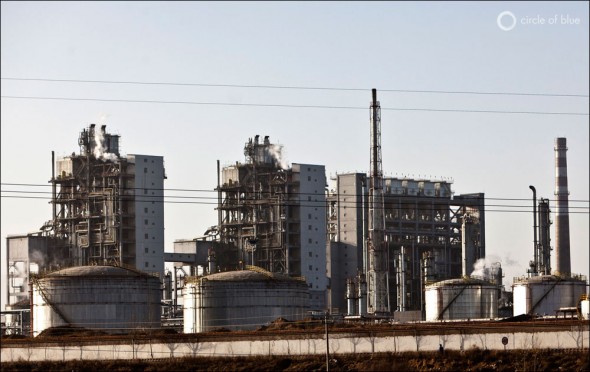
Though government authorities are nervous about water use—it takes 15 to 20 cubic meters (3,950 to 5,300 gallons) of water to convert coal to 1 metric ton of chemicals—China is substituting coal for oil as well as building new coal-conversion plants; especially those to convert coal to olefin, a precursor compound in plastics production, methanol, and synthetic gas, Wang Xi Fu told Circle of Blue in December. Wang is an engineer in the China National Petroleum and Chemical Planning Institute, a state-managed research group.
In 2006, China opened a six-year, $US 12 billion annual program to construct coal-conversion plants, Wang said. Twenty-three new plants have been constructed, including three coal-to-olefin plants expected to open this year. AsiaChem, a consultancy that publishes China CoalChem, a monthly report on the coal conversion sector, counts 131 other plants currently under construction.
Coal-to-chemicals production reached 24 million metric tons in 2010, and the NDRC forecasts production to reach 106 million metric tons by 2020.
One of the newest and largest coal-conversion plants is Shenhua’s coal-to-methanol and coal-to-olefin plant in Baotou, just north of Ordos. The Baotou plant is the largest of its kind in the world and will annually convert 1 million metric tons of coal into 600,000 metric tons of chemicals when it begins commercial operation later this year.
But coal-to-chemicals plants use much more water—as much as 20 cubic meters (5,300 gallons) per metric ton of chemicals produced, compared to 10 to 12 cubic meters (2,600 to 3,200 gallons) per metric ton of diesel fuel—because the chemical conversion requires more hydrogen from water to combine with carbon in coal to form the long hydrocarbon chains needed for chemical production. Shenhua’s Baotou plant, for example, will use 12 million cubic meters (3.2 billion gallons) of water annually.
Big New Industrial Sector
By design, and to save money in shipping coal, China started five years ago to establish much of the coal-to-chemicals industry near where coal is mined and also close to available water sources—the middle and lower reaches of the Yellow River in eastern Inner Mongolia, Ningxia, and Xinjiang Autonomous Regions.
Authorities also ordered up a new pipeline network to transport coal-based chemicals to market. Four pipelines are planned or are in various stages of design and construction, including an 1,800-kilometer pipeline from Inner Mongolia to Liaoning Province, which will be capable of annually transporting 10 million metric tons of methanol and will cost $US 766 million. Other pipelines include the 2,000-kilometer-long pipeline from Ningxia to Shaanxi Province, onto Ordos and then Hebei Province, which carries with it a price tag of $US 1.2 billion.
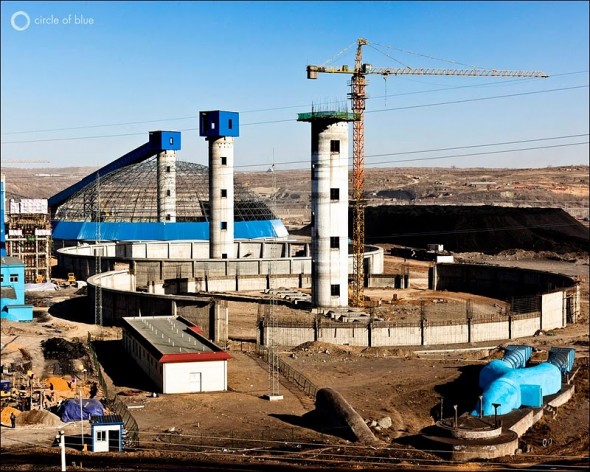
Just how much of a threat the coal-to-chemicals program will be to northern and western China’s water supply is neither well understood nor much discussed—but it seems clear that it will do nothing to relieve China’s water scarcity problems.
China’s water use reached 599 billion cubic meters (158 trillion gallons) last year. As we’ve explained in previous Choke Point: China chapters, China’s principal energy-water choke point is the result of rocketing coal-based energy demand confronting water scarcity in the drying northern landscape where much of the nation’s coal is mined.
Over the next decade, China’s total water use will increase to 670 billion cubic meters (177 trillion gallons) annually by 2020. Of the 71-billion-cubic-meter (19-trillion-gallon) increase, according to Chinese analysts in academia and the government, 50 billion cubic meters (13 trillion gallons) will be required by the coal sector.
National programs for improving energy efficiency and water conservation could reduce water use. China also is transporting water from its wet south to its dry north via a series of large-scale infrastructure projects. Nevertheless, according to energy and water authorities, China’s coal-rich northern provinces face a water deficit that could amount to 20 billion cubic meters (5 trillion gallons) annually by 2020.
Meanwhile, Shenhua’s coal-to-liquids refinery in Ordos—the most efficient in the world—is performing as Xiangkun would expect. He told Circle of Blue that this fact provides him some assurance that China will pursue the coal-to-liquids sector’s development, once national leaders are comfortable that water for operations and processing is indeed available.
“Coal conversion to fuels is part of our 10-year plan,” said Xiangkun. “We think the water resource questions can be answered. The coal-to-liquids program will again be a priority in our energy strategy.
Map and graphics by Season Schafer, Greg Hudson, Valerie Carnevale, Chelsea Kardokus, and Vicki Rosenberger, undergraduate students at Ball State University. Photos by J. Carl Ganter, a Traverse City-based photojournalist and director of Circle of Blue, and Toby Smith a British photojournalist, represented by Reportage by Getty Images, who specializes in global energy and environment matters. Smith’s further work can be viewed on his website, and he can be reached at toby@shootunit.com.
Contributions by Jennifer Turner, Washington, D.C.-based director of the China Environment Forum at the Woodrow Wilson International Center for Scholars.
Circle of Blue’s senior editor and chief correspondent based in Traverse City, Michigan. He has reported on the contest for energy, food, and water in the era of climate change from six continents. Contact
Keith Schneider

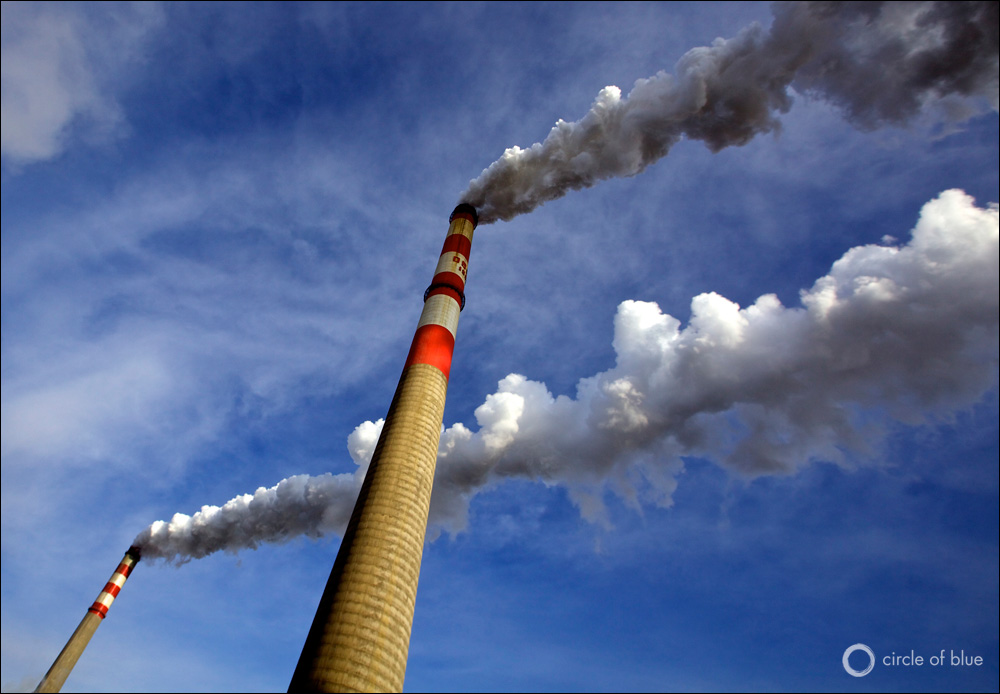
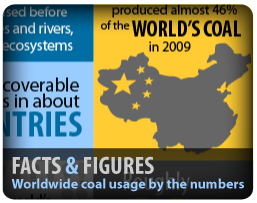
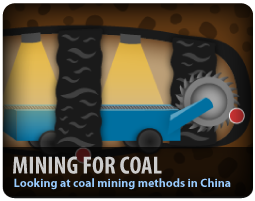
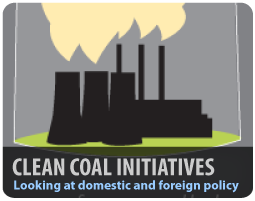
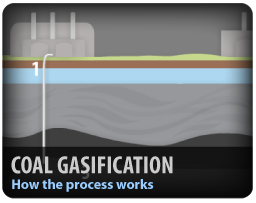
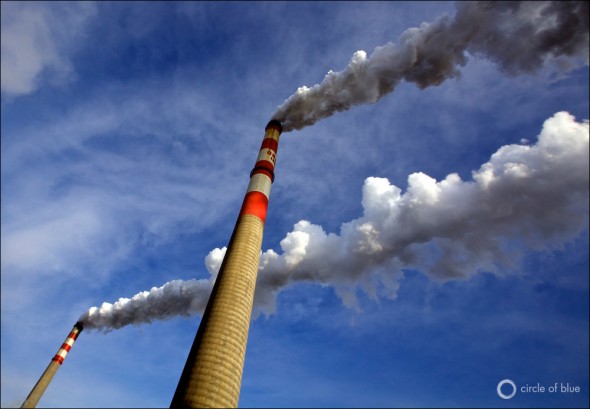
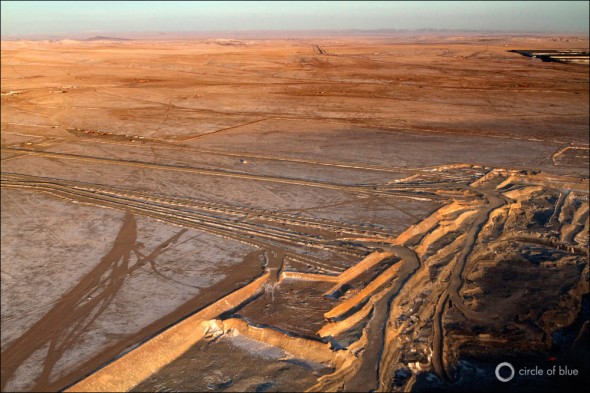
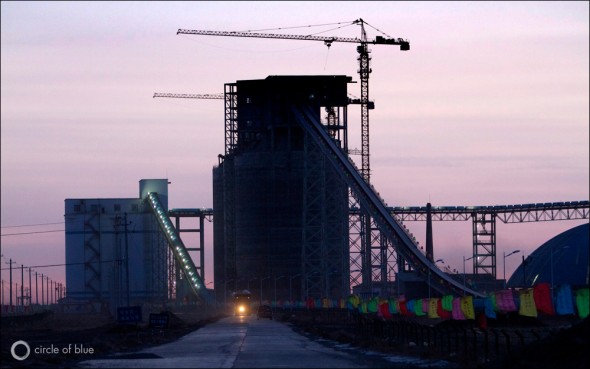


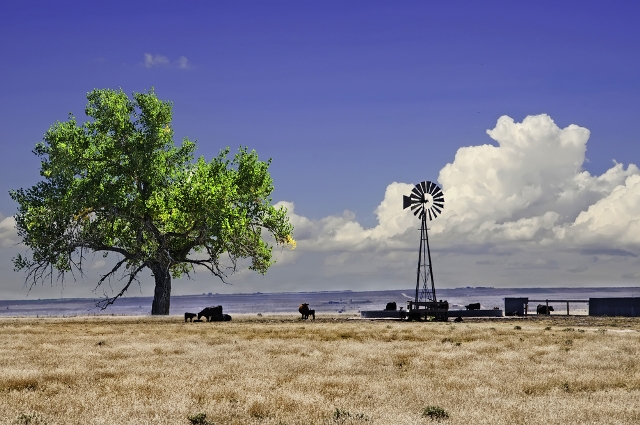

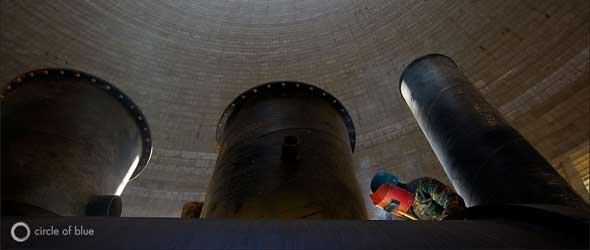
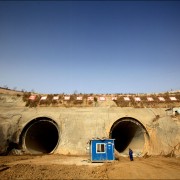
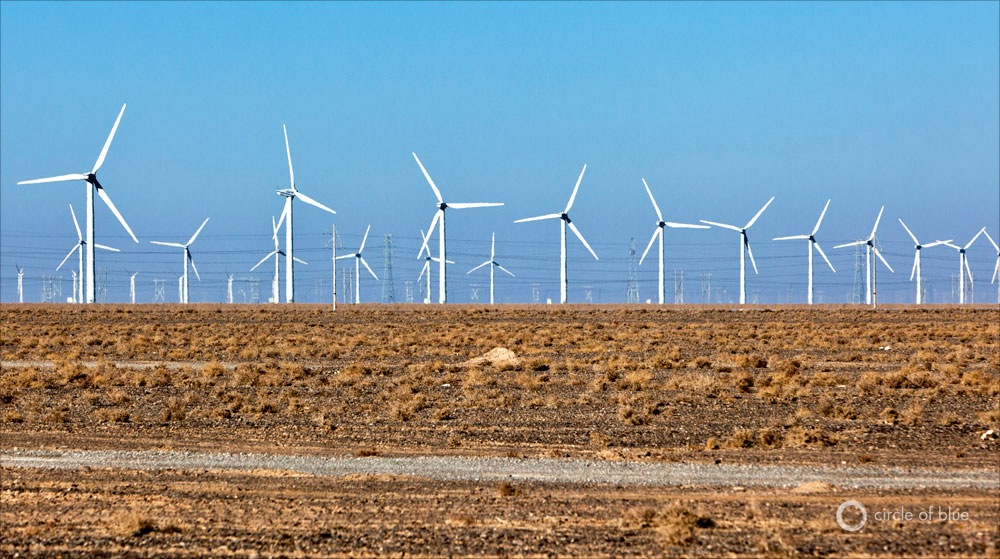


OMG that Guy’s totally mad they dont care about us they think about money ahh money careless ..pls guy go green plss….
True, Direct Coal Liquefaction (DCL) requires lots of water to be mixed in with coal before heating. Conventional coal gasification does not require water, and is much cleaner technology. It does however cost more. The Chinese experiment with DCL failed because the technology itself was not economically viable and because it required too much water.